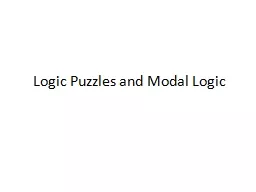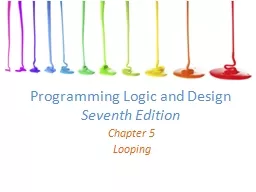PPT-Digital Logic Design
Author : mitsue-stanley | Published Date : 2016-02-21
Lecture 22 Announcements Homework 7 due today Homework 8 on course webpage due 1120 Recitation quiz on Monday on material from Lectures 2122 Agenda Last time Programmable
Presentation Embed Code
Download Presentation
Download Presentation The PPT/PDF document "Digital Logic Design" is the property of its rightful owner. Permission is granted to download and print the materials on this website for personal, non-commercial use only, and to display it on your personal computer provided you do not modify the materials and that you retain all copyright notices contained in the materials. By downloading content from our website, you accept the terms of this agreement.
Digital Logic Design: Transcript
Download Rules Of Document
"Digital Logic Design"The content belongs to its owner. You may download and print it for personal use, without modification, and keep all copyright notices. By downloading, you agree to these terms.
Related Documents














